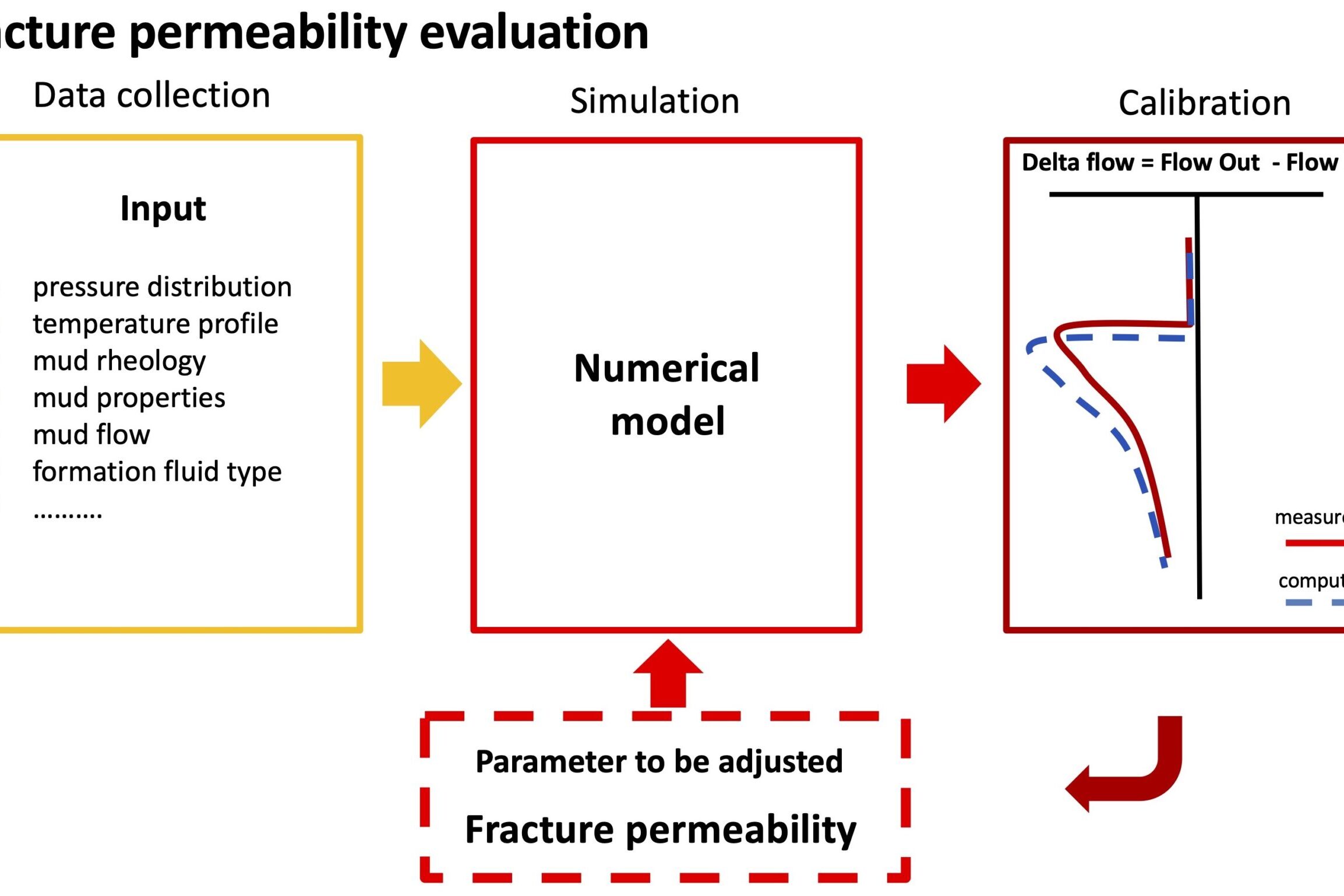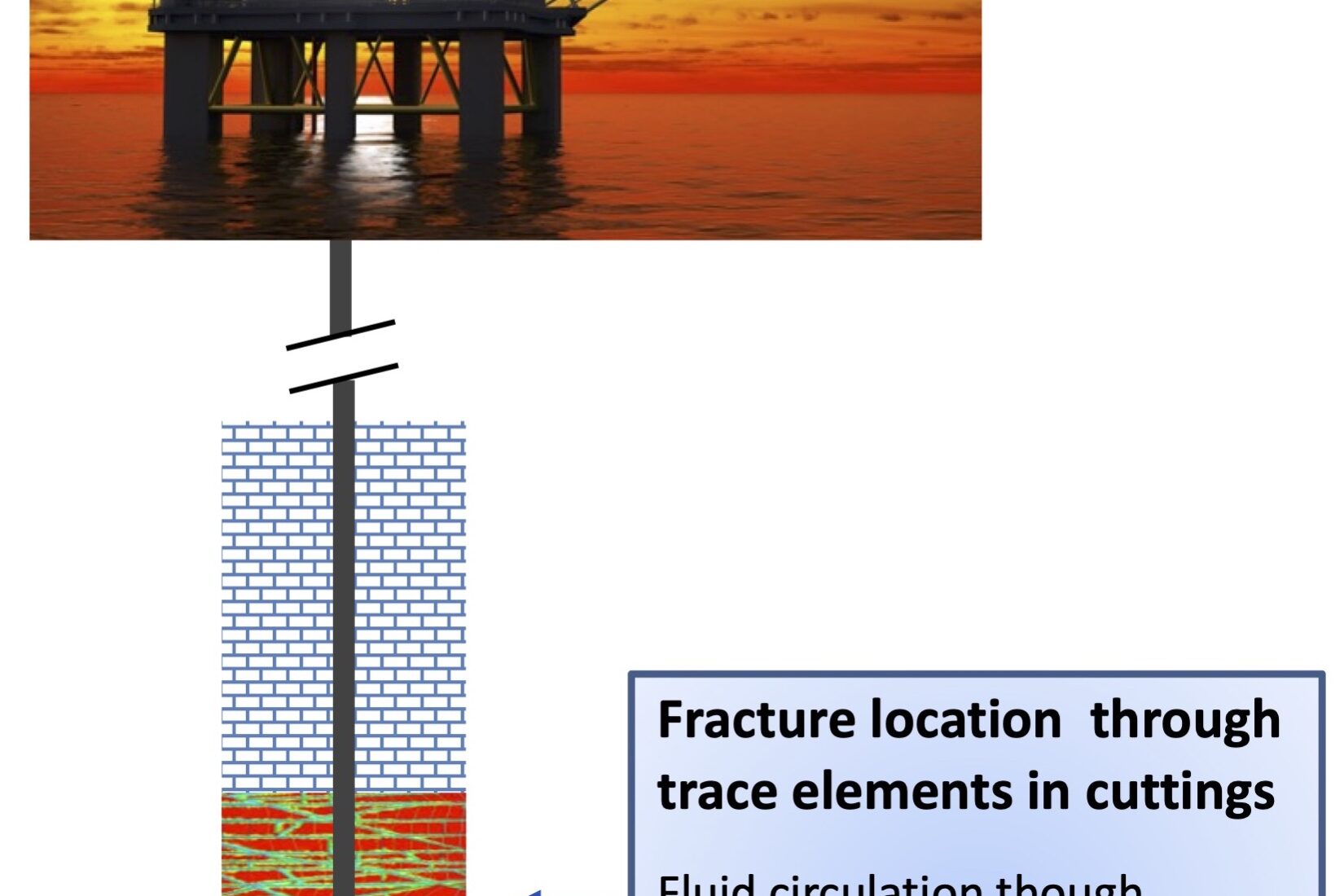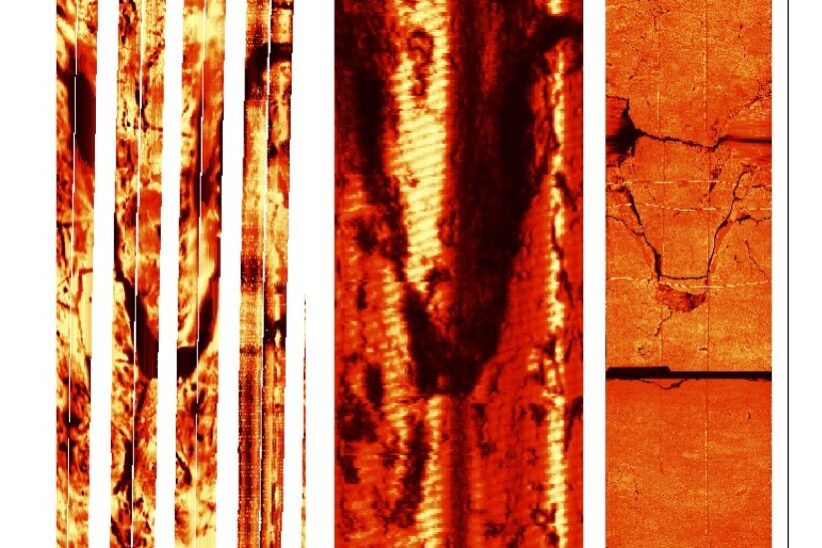Feedback between mud losses and fractures during along wellbores in fractured formations
- Start date: 2016
- End date: 2018
- Funded by: Geolog S.r.l
- Topic: Conceptual and numerical modeling of flow processes and mud losses in porous and/or fractured reservoirs in exploration and development wellbores.
This work is keyed to enhancing our ability to characterize naturally fractured reservoirs through quantification of uncertainties associated with fracture permeability estimation. These uncertainties underpin the accurate design of well drilling completion in heterogeneous fractured systems. We rely on monitored temporal evolution of drilling mud losses to propose a non-invasive and quite inexpensive method to provide fracture aperture and fracture mud invasion. Drilling mud is modeled as a yield power law fluid, open fractures being treated as horizontal planes intersecting perpendicularly the wellbore. Quantities such as drilling fluid rheological properties, flow rates, pore and dynamic drilling fluid pressure, or wellbore geometry, are often measured and available for modeling purposes. Due to uncertainty associated with measurement accuracy and the marked space-time variability of the investigated phenomena, we ground our study within a stochastic framework. We discuss (a) advantages and drawbacks of diverse stochastic calibration strategies and (b) the way the posterior probability densities (pdfs) of model parameters are affected by the choice of the method employed. We propose to assist stochastic model calibration through results of a moment-based global sensitivity analysis (GSA). The latter enables us to analyze the way parameter uncertainty influences key statistical moments of model outputs and can contribute to alleviate computational times. Our results suggest that combining moment-based GSA with stochastic model calibration can lead to significant improvements of fractured reservoir characterization.




